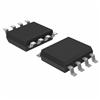IR11867-E01: ApplicationThe module's application is to supply power to the trapezoidal brushless DC motor in Electric and Hydraulic Electric Power Steering (EPS and HEPS) systems, by switching power to the three...
floor Price/Ceiling Price
- Part Number:
- IR11867-E01
- Supply Ability:
- 5000
Price Break
- Qty
- 1~5000
- Unit Price
- Negotiable
- Processing time
- 15 Days
SeekIC Buyer Protection PLUS - newly updated for 2013!
- Escrow Protection.
- Guaranteed refunds.
- Secure payments.
- Learn more >>
Month Sales
268 Transactions
Payment Methods
All payment methods are secure and covered by SeekIC Buyer Protection PLUS.

 IR11867-E01 Data Sheet
IR11867-E01 Data Sheet






